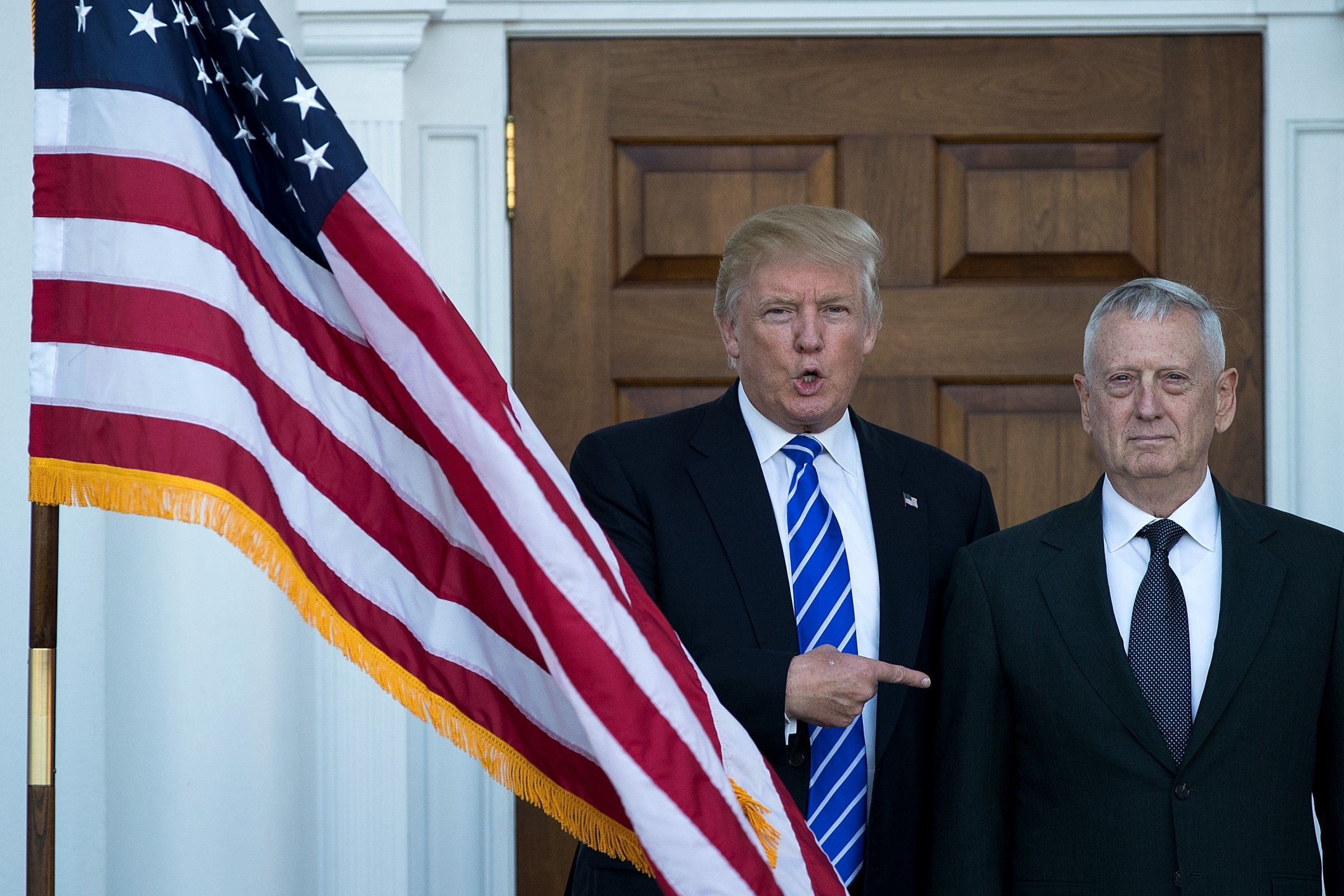
Speaking at a rally in Cincinnati on Thursday night, President-elect Donald Trump said he will nominate retired Marine general James “Mad Dog” Mattis to become the next Secretary of Defense.
There’s just one catch, as TIME’s Mark Thompson has noted: One must be retired from the military for at least seven years to be “eligible” to be the Secretary of Defense, according to a section of the U.S. Code, and Mattis has been retired for three.
This requirement — which used to stipulate ten years until 2008— originates from the National Security Act of 1947, which President Harry S. Truman signed into law shortly after the end of World War II. That act create the role of the Secretary of Defense to coordinate the Army, Navy, and newly-created Air Force branches of the military. The law also created the Central Intelligence Agency (CIA).
The law was a product of its post-World War II time, according to Douglas T. Stuart, professor of Political Science and International Studies at Dickinson College.
“Pearl Harbor convinced us of the need for permanent preparedness in ways we didn’t know we needed before,” he says, “even during peace time.” The coming of the Cold War meant the U.S. needed to have a unified military structure to fight the Soviets if they attacked. At the same time, however, post-war leaders were aware of the risk of a militarized system. “We realized preparedness was going to make us have a stronger military, but there was tension between folks who recognized the need for it and folks that recognized the danger of it becoming a Gestapo, the so-called Gestapo problem. The Nazis had network of intelligence institutions that spied on everyone to repress democracy. The U.S. wanted to avoid what had happened in Germany and Japan where the military had dominated the democracy.”
Besides, the Founding Fathers would not approve of the choice of a Secretary of Defense who was too closely connected to the active military, some historians say.
“Before World War II, the U.S. never had a truly unified military structure,” says Jeremi Suri, professor of history at the University of Texas at Austin. “The Founders wanted the Army and Navy to be divided, [separate] divisions, to ensure they couldn’t come together as a strong force to challenge political leadership [and] civilian rule over the military—which is the President, who is the Commander-in-Chief, according to Article II of the Constitution.”
So, he argues, while the 1947 law “was designed to make us more ready to fight,” the ten-year window was added so that the Secretary of Defense “would be someone who didn’t have direct connections to the military, which could lead to someone to be not loyal to civilian leadership.”
Get your history fix in one place: sign up for the weekly TIME History newsletter
Historian Michael Hogan, a professor at the University of Illinois, adds that maintaining a standing military is expensive, and at the time many in the American government were reluctant to give up a balanced budget in favor of a stronger force. There were Republicans in the late 1940s who wanted to spend less on the military and disapproved of Truman’s decision to go to war in Korea, Hogan says, and this concern about “the militarization of American society and American budget” is also clear in President Dwight D. Eisenhower’s 1961 farewell address to Congress, in which he famously warned about the development of the military-industrial complex. (“In the councils of government, we must guard against the acquisition of unwarranted influence, whether sought or unsought, by the military-industrial complex. The potential for the disastrous rise of misplaced power exists and will persist.”)
In fact, the role of Secretary of Defense was weak when it was first created, meant to be more of a coordinating role.
“This office will probably be the biggest cemetery for dead cats in history,” James Forrestal, the first person to hold the position, said in 1947. Hogan notes that this quotation is often used to position Forrestal as the first “victim” of the new arrangement, as he was never really able to get past the in-fighting between the newly connected branches of the military. Forrestal died on May 22, 1949, after falling out of a window. (As the New York Times reported on May 23 of that year, “This country will rightly agree with President Truman in regarding the death of James Forrestal as a casualty of the war. His tragedy is directly traceable to his overwork on behalf of his country.”)
But where does this all leave Mattis?
Congress could make an exception, which requires passing “a new statute,” according to Bobby Chesney, professor and director of the Strauss Center for International Security and Law at the University of Texas at Austin. Congress has done so before: when Truman wanted former Secretary of State George Marshall to run the Pentagon in 1950. “Truman was a very unprepared president with very little experience, so he needed someone with Marshall’s experience,” argues Suri, who notes that Congress could have changed the original law but chose to pass a one-time exception instead, underscoring the importance of distance from military service for the role.
The question is whether Congress will find Mattis similarly indispensable.
More Must-Reads From TIME
- The 100 Most Influential People of 2024
- Coco Gauff Is Playing for Herself Now
- Scenes From Pro-Palestinian Encampments Across U.S. Universities
- 6 Compliments That Land Every Time
- If You're Dating Right Now , You're Brave: Column
- The AI That Could Heal a Divided Internet
- Fallout Is a Brilliant Model for the Future of Video Game Adaptations
- Want Weekly Recs on What to Watch, Read, and More? Sign Up for Worth Your Time
Write to Olivia B. Waxman at olivia.waxman@time.com